Acute
In 1851 a detached infirmary was erected to the north of the workhouse, at a cost of £1,230.
In 1882 another infirmary pavilion with 120 beds was built to the east of the workhouse at a cost of £11,000, including equipment. The main Administration Block was enlarged. In 1884 the Guardians were authorised to spent £700 to complete the infirmary and the Board Room, and £400 to finish equipping the infirmary. A mortuary was added to the site in 1885.
In 1888 a detached single-storey block was built as a Receiving Ward with 24 beds, as well as a 3-storey block for aged male paupers, a Dining Hall and a 60-bedded casual ward for vagrants.
Laundry buildings were added to the site in 1897. In 1899, rather than build a Nurses' Home, an adjoining property - Bow House - was purchased and renovated to provide accommodation for infirmary staff.
In 1904 the Registrar-General recommended that the address for births at the workhouse be given as Middle House or 49 Dorking Road to avoid stigmatising the child by association with the workhouse (deaths were similarly registered after 1919).
In 1910 a Nurses' Home was built and alterations made to the workhouse, at a cost of £3,179.
During WW1 the infirmary was upgraded with the installation of an operating theatre and an X-ray apparatus. A large wooden hut was erected to provide 26 extra beds for the infirmary.
By 1922 the Infirmary had 153 beds, with an average occupation of 120. The average number of acute cases admitted in 1922 was 31; 14 major and 15 minor operations had been performed. The nursing staff numbered 20, including 13 probationers. The infirmary had no Resident Medical Officer, but a local GP was available if required.
In 1928 another block for female patients was added to the infirmary.
In 1930, following the abolition of the Boards of Guardians,the workhouse and its infirmary were transferred to the control of Surrey County Council, becoming the Epsom Public Assistance Institution.
The Institution comprised the workhouse ('The House') on the western side of the site and the infirmary ('The Hospital') on the eastern side. Both shared the same entrance in Dorking Road. The Institution was administered by a Master and a Matron, who was also the Superintendent of the Hospital. A part-time Medical Officer was employed.
Two 3-storey wings of the main old House building accommodated 'ordinary' cases, i.e. the able-bodied destitute poor. The dormitories were poorly lit and lacked adequate ventilation. All the walls in the building were unplastered, as were the ceilings of the 1st and 2nd floors. The north wing, built in 1890, was in a better state, with the internal surfaces tiled with glazed brown brick.
The 2-storey Hospital buildings were in good condition and were mainly used for acute and maternity cases, while the chronically sick were accommodated in the Old Infirmary, north of the workhouse building.
The central block of the Hospital contained a modern operating theatre, which was almost in daily use. It also had a modern X-ray apparatus and equipment to provide electrical treatment. The northern block contained the male wards and the two southern blocks the female ones. All the wards had verandahs or balconies large enough for beds to be wheeled out onto them. The wooden hut, built during the war, lacked sanitation so was not in use.
The maternity unit consisted of 6 beds, and a labour room with 2 beds. Sometimes maternity patients had to be accommodated in the adjacent female ward, which contained mental patients. Short-term mental patients were housed in a detached 2-storey block with beds for 4 male and 4 female cases on the ground floor. Each side contained a padded cell. There was no accommodation for attendants. The first floor was used as storage space. The Hospital had two isolation wings of 10 beds each for male and female patients.
The site also contained All Saints Chapel, built of brick around 1879, a small unmodernised mortuary and a large building near the entrance with accommodation for 160 casuals.
Surrey County Council decided that the Hospital would deal exclusively with surgical and other acute cases. It was renamed the Surrey County Hospital. The chronic sick patients would move to part of The House, the remainder of which would be for ordinary cases.
In 1938 a new Nurses' Home opened. It had cost £95,600 to build. Plans were made to enlarge the Hospital to 500 or 600 beds, with an Out-Patients Department and other specialist departments, but the outbreak of WW2 rendered this impossible. However, a Maternity Department with 60 beds in single or 5-bedded wards did open in 1941.
During the war the Hospital and the Institution joined the Emergency Medical Service.
In 1948 the Hospital joined the NHS under the control of the Epsom Group Hospital Management Committee, part of the South West Metropolitan Regional Health Board. It was renamed the Epsom District Hospital. It had one operating theatre and 330 general beds, of which 258 were open. The workhouse buildings on the west of the site became The Oaks (Home for the Aged), a County Welfare establishment.
The Hospital had several annexes in order to free up acute beds - Hawkshill, where maternity patients were sent for convalescence once they had had their babies and Broom Close for TB patients. Chronically sick patients were transferred to Ewell Park or Shabden Park.
By July 1949 some 262 of the 330 beds were staffed and, by 1950, 295 beds. The average occupancy of the beds was 256.
In 1952, while the old buildings were used to accommodate the chronic sick, the Hospital consisted of scattered ward blocks of varying dates, including a new Maternity Unit and a good modern Nurses' Home. A concrete block built by the civil defence authorities during the war was converted into two new wards. An Out-Patients Department was established in an old building near the entrance.
At the beginning of the 1950s some of the workhouse buildings at the north of the site were demolished to make way for a new block - Headley Wing - to be built at a cost of £350,000 and completed by July 1955. Visitors to the Hospital from the King's Fund earlier in the year, when the Hospital had 347 beds, had found the wards old-fashioned with no cubicle curtains (portable screens were used) and, while there were wireless (radio) broadcasts, there were no headphones. Only one ward had been modernised. The kitchen was too small and there was no separate vegetable preparation room. The sole large refrigerator could only store part of the milk supply; the rest was kept in the cold room of a butcher's shop in the neighbourhood. There was no larder and dry goods were stored in an outside temporary building.
Headley Wing was officially opened by Princess Margaret on 20th October 1955. The ground floor contained an Out-Patients Department, a Casualty Department with its own operating theatre, a Chest Clinic, a pharmacy and an X-ray Department. The first floor contained the Pathology Department as well as a Board Room and administrative offices. In addition, the other Hospital buildings had been modernised and redecorated. The Admission ward was in workhouse accommodation; it was very cramped and was used as a reception ward for long-stay patients who were waiting to go into homes for the chronic sick or into the hospital for treatment. The Children's Department had been remodelled on modern lines and was in full use.
By the mid 1950s the weekly cost of an in-patient was £14 16s 5d (£14.82). Bed occupancy was about 84%.
In 1959 the gardens were reorganised.
By 1959 the Hospital had 311 beds, of which on average 271 (88%) were occupied (compared to 1958, when 260 were occupied). The weekly cost of an in-patient had risen to £25 19s 11d (£26), while the use of a private pay bed was charged at £3 18s 0d (£3.90) a day (£27.30 a week). Visitors from the King's Fund that year found that although the block of 7 wards had been modernised, the sanitary accommodation had been untouched, with 30 patients sharing two toilets and, in some cases, two washbasins. They regarded this as "one of the worst aspects of the Hospital".
In March 1966 the Hospital had 318 beds, of which on average 283 (90%) were occupied. The weekly cost of an in-patient had risen to £39 7s 6d (£39.37). A charge for a pay bed was £5 18s 0d (£5.90) a day (£41.30 a week).
In 1969 the Hospital Management Committees for the Epsom Group and West Park Hospital merged to become the Epsom and West Park Group Hospital Management Committee.
Plans were made for a new block to be built, which involved the demolition of two wards. The main medical unit moved to Cuddington Hospital and pre-convalescent patients were sent to the Schiff Home of Recovery. The Maternity Department was extended.
The Wells Wing opened in 1971. It contained the medical and surgical wards, the operating theatres, the main kitchen, the restaurant, the Postgraduate Medical Centre and seminar rooms.
In 1974, following a major reorganisation of the NHS, the Hospital came under the administration of the Mid Surrey District Health Authority, part of the South West Thames Regional Health Authority. It had 405 acute and 82 psychiatric beds.
In the mid 1970s the original workhouse buildings (latterly The Oaks) were demolished and a new block built in their place, which opened in 1975 as the Langley Wing, providing psychiatric care.
In 1990, following another NHS reorganisation and the introduction of the purchaser-provider trust system, the Hospital came under the control of the Epsom Healthcare NHS Trust. In 1999 the Trust merged with the St Helier Hospital NHS Trust to form the Epsom and St Helier Hospitals NHS Trust.
In 1991 the Hospital was renamed Epsom General Hospital.
In 1995 the Bradbury Wing opened to provide maternity and paediatric services. An MRI machine, leased from Alliance Medical, was installed in the building.
In 2000 the 4-storey Denbies Wing was built from funds donated by Adrian White, a multi-millionaire businessman and Chairman of the Epsom Healthcare NHS Trust from 1990-1994 and 1997-1999. The Wing, owned by the charitable Denbies Trust, has been leased to the Hospital for 999 years. The Hospital extended the ground floor of the building and provided a new entrance for the Accident and Emergency Department, which occupied its new premsises in 2001.
In March 2004 the Queen opened the South West London Elective Orthopaedic Centre, which occupied the upper floors of the Denbies Wing and had 65 beds and 4 operating theatres.
In 2006 £1.5m was spent on upgrading the High Dependency and Intensive Care Units and a further £0.5m on refurbishment of four operating theatres. It was intended to develop a section of the Woodcote Wing into a 20-bedded Clinical Assessment Unit linked to the Accident and Emergency Department.
However, on 30th September 2006, in order to save £24m, the Trust announced that the Accident and Emergency Department at the Hospital would close and the service would transfer to St Helier Hospital. In the following month a public protest was held against this downgrading of the Hospital. Some 5,000 demonstrators marched through Epsom town centre, bringing traffic to a halt. The Chief Executive of the Trust then announced that the Accident and Emergency Department would remain open until a new critical care hospital had been built. However, all trauma and emergency surgical cases were taken to St Helier Hospital.
In October 2006 Adrian White put forward a proposal to buy the Hospital and redevelop the site, building a state-of-the-art hospital which would provide a mixture of NHS, private and charity-funded services.
In 2007 the Hospital faced a threat of closure. The Health Secretary, Patricia Hewitt, met with local MPs to discuss the plan proposed by Mr Adrian White, now the High Sheriff of Surrey. In June the same year the proposal was declined by the Trust Board.
In June 2008 a public meeting was held by the Trust, who had voted to transfer the maternity and paediatric in-patient services to St Helier Hospital in August, despite protests from a huge crowd of members of the public and doctors who had been turned away from the meeting because it was full to capacity.
Present status (July 2008)
The Hospital is still operational,
but facing an uncertain future. The site contains an amorphous
aggregation of wings and buildings. The only surviving Victorian
building is the Casey
Annexe.
In 2009, when the Hospital had 305 beds, the Surrey and Borders Partnership NHS Trust decided that the accommodation it was renting in the Langley Wing was not suitable for modern day mental health care and, because it was not the owner, did not want to upgrade them. Despite significant protests by the Epsom and Ewell Borough Council, carers and others dealing with mental health patients the Trust proposed to move services to Redhill Hospital. (In 2013 the Surrey and Borders Mental Health Foundation Trust still occupied the ground floor of the Langley Wing, but had handed back the second floor to the Epsom and St Helier University Hospitals NHS Trust, which occupies the first floor of the building.)
It had been proposed in 2011 to demerge the Hospital from the Epsom and St Helier University Hospitals NHS Trust and instead seek a merger with Ashford and St Peter's Hospitals NHS Foundation Trust. However, the project was not supported by NHS London on financial grounds was was brought to a halt in October 2012.
On 30th March 2013 the NHS underwent yet another major reorganisation, when Primary Care Trusts (PCTs) and Strategic Health Authorities ceased to exist. From 1st April 2013 the Surrey Downs Clinical Commissioning Group became the purchaser of healthcare services for the area, replacing NHS Sutton and Merton PCT and NHS Surrey PCT.
The Better Services Better Value (BSBV) team has reviewed services in the local hospitals. The Hospital's future still remains uncertain.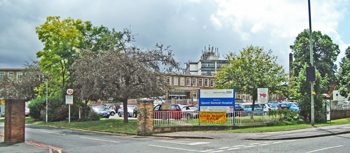
The entrance to the Hospital on the southern side of Dorking Road.
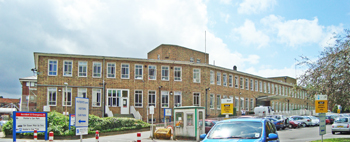
The Headley Wing opened in October 1955 and contains the Out-Patients Department and diagnostic services.

The Bradbury Wing opened in 1995 on the eastern side of the site.
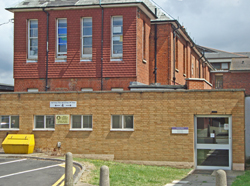
The Wells Wing containing the wards opened in 1971.
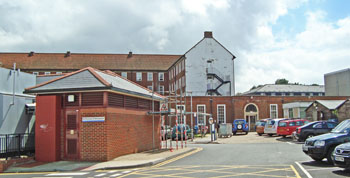
The site contains buildings of varying ages and architectural styles (above and below).
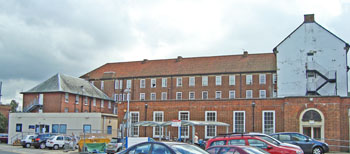
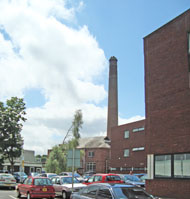
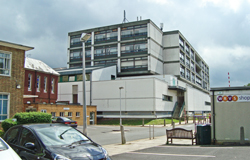
The southwest corner of the site.
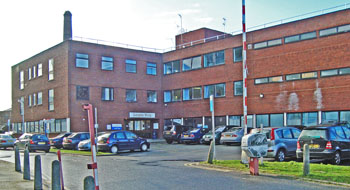
The Langley Wing is run by Surrey & Borders Partnership
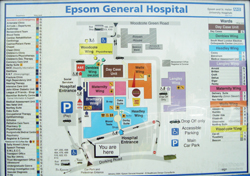
The site map of the Hospital.
Update: January 2012
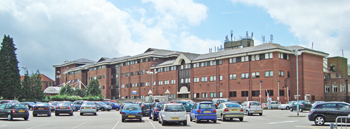
The Bradbury Wing
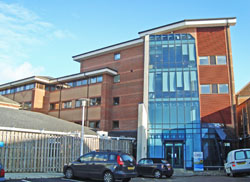
The Elective Orthopaedic Centre provides hip and knee joint replacement services for several NHS Trusts. Shoulder, foot and ankle surgery, hip arthroscopy and minor orthopaedic procedures are also carried out. The Centre also uses Beacon Ward, a temporary ward built in 2001.
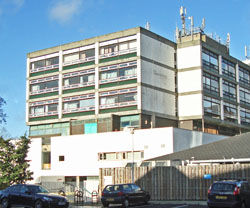
The Wells Wing, built in 1971.
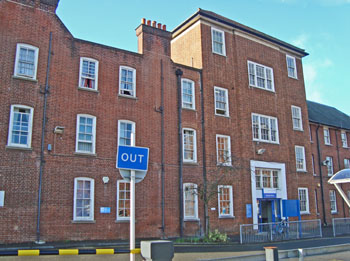
Two floors of Rowan House, the former Nurses' Home built in 1938, contain residential accommodation. The building also now contains offices and therapeutic and training areas.
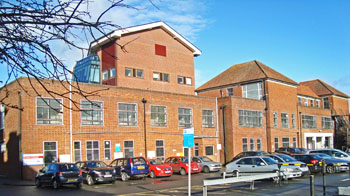
The Woodcote Wing, built in 1936, was decommissioned in 2009.
Abdy C 2001 Epsom Past. Chichester, Phillimore.
(Author unstated) 1899 Reflections from a Board Room mirror. Nursing Record and Hospital World, 30th December, 540.
(Author unstated) 1922 The General Nursing Council for England and Wales. British Journal of Nursing, 14th October, 242-243.
http://ccpanel.org.uk
http://news/bbc/co/uk
www.bbc.co.uk
www.bsbv.swlondon.nhs.uk
www.dailymail.co.uk
www.epsom-ewell.gov.uk
www.epsomguardian.co.uk
www.getsurrey.co.uk
www.nationalarchives.gov.uk
www.thisislocallondon.co.uk
www.epsomandewellhistoryexplorer.org.uk (1)
www.epsomandewellhistoryexplorer.org.uk (2)
www.surreyguardian.co.uk
Return to home page